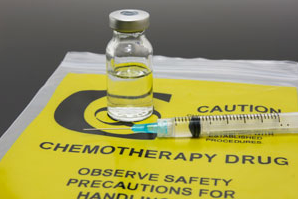Publication
Article
ASCO Identifies Additional Ways to Improve Hazardous Drug Safety
Author(s):
The United States Pharmacopeial Convention (USP) General Chapter is a good start for improving the protection of healthcare workers exposed to hazardous drugs, but more studies and safety protocols are needed, according to an American Society of Clinical Oncology (ASCO) expert panel that evaluated USP and various other guidelines in a report last year.

The United States Pharmacopeial Convention (USP) General Chapter <800> is a good start for improving the protection of healthcare workers exposed to hazardous drugs (HDs), but more studies and safety protocols are needed, according to an American Society of Clinical Oncology (ASCO) expert panel that evaluated USP <800> and various other guidelines in a report last year.1
The panel identified key areas that need elucidation, noting that through the preparation and administration of anticancer regimens, roughly 8 million healthcare workers could be exposed to hazardous substances.
More investigation is needed to quantify the level of risk faced by healthcare workers exposed to HDs, the panel wrote in its report.
The expert panel endorsed most of the standards contained in USP <800>, but it said that evidence review and consensusbased standards are needed for medical surveillance, closed-system transfer devices (CSTDs), and ventilation and containment equipment.
“The role of routine ongoing medical surveillance programs that include medical screening, laboratory testing, or other biologic monitoring is unclear, because there are no published data to reliably inform a standard or best practice,” the panel wrote.
There are few validated tests available for detecting early signs of disease, and more needs to be understood about what levels of exposure lead to adverse events, the panel added.
Not enough is known about the protective capabilities of CSTDs, the panel wrote. Both short- and long-term data are lacking on whether CSTDs have had a positive effect on worker safety. The National Institute for Occupational Safety and Health (NIOSH) is developing a vapor containment protocol for CSTDs, and ASCO standards will be revised to include this testing protocol when it becomes available, the panel wrote. It encouraged NIOSH to certify CSTDs so that practices would know which ones to use.
USP <800> describes standards for ventilation of workplaces where HDs are prepared and administered, including air flow control and external venting. But these measures do not eliminate the risk of exposure, the panel noted. It said that practices that do not have external venting or appropriate internal air-flow controls should consider off-site HD preparation.
The panel called for more investigation to determine the optimal environment for workers who handle HDs.
“Lack of data on the effectiveness of controls is an indicator of the need for more research to develop an evidence base for standards, including the establishment of the baseline risk of harms in current workplace settings, as well as the prevalence of adverse health effects associated with hazardous drugs that are currently in use, barriers to implementation of the hierarchy of controls, and the effectiveness of various interventions,” the panel wrote.
A further concern identified in the report is the reproductive health of workers exposed to HD risks. Workers who are trying to conceive, are pregnant, or are breastfeeding should be granted the option of work assignments that lower their risk of exposure, the panel said. These policies should be explained to workers at the outset of employment, and employers should share responsibility for appropriate placement of workers, according to the report.
Implementation of USP <800> will vary across states. For example, the Oklahoma Board of Pharmacy has delayed enforcement until July 1, 2021.2 Practices should check with respective pharmacy and medical boards, regulators, and accrediting organizations to understand how and whether USP <800> will apply to them, the expert panel said.
In preparing its report, the ASCO expert panel also considered guidelines issued by the Occupational Safety and Health Administration and Oncology Nursing Society. Its conclusions are based on unmet needs that these guidelines did not address.
References
- Celano P, Fausel CA, Kennedy EB, et al. Safe handling of hazardous drugs: ASCO standards. J Clin Oncol. 2019;37(7):598- 609. doi: 10.1200/JCO.18.01616.
- National Community Pharmacists Association (NCPA). Oklahoma delays USP <800> implementation until 2021. NCPA website. ncpanet.org/newsroom/qam/2019/09/05/oklahoma- delays-usp-800-implementation-until-2021. Published September 5, 2019. Accessed January 20, 2020.







